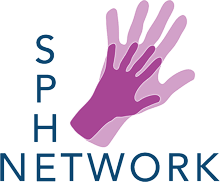The second World Anti-Bullying Forum took place in Dublin City University on June 4th-6th 2019. This biennial, multidisciplinary conference brings academics, practitioners and decision-makers from across the globe together to critically engage with, discuss and share expertise on how best to challenge the endemic and pernicious social ill of bullying.
While a large number of papers and workshops focused on the concept of cyberbullying (addressing concepts other than ethnicity, nationality or ‘race’), my paper focused on racism and racial bullying. It specifically focused on teachers’ misrecognition of racist incidents and made recommendations on what schools and teachers can do to ensure racism is proactively addressed in schools.
As part of the presentation, I drew on the work of James (2015), interpreting misrecognition as “an everyday and dynamic social process where one thing is not recognised for what it is because it was not previously ‘cognised’ within the range of dispositions and propensities of the habitus of the person(s) confronting it” (James, 2015, p.100, emphasis added).
Essentially, I presented analysis on how teachers misrecognise racist incidents and attribute the cause of such incidents to other factors, often to perceived deficits inherent within the ‘victims’ of the racist abuse. It is therefore the minoritised child who is incorrectly recognised as the problem. The following quotation illustrates an example of where the teacher pathologises the minoritised child and attributes blame to deficits within the child himself,
“Like I haven’t come across any racist incident this year now but there would be a little bit of slagging, well not slagging almost smirking around Aazim and that kind of thing, but I don’t think it’s because of where he’s from. It’s just him” (Kavanagh, 2013, p.259).
Misrecognition can also manifest as teachers’ consciously or unconsciously avoiding naming and using the term ‘racism’ as the following quotation illustrates,
“One year. . . a child came from another country, from Africa and there was a little bit of giggling and that kind of thing about him. Maybe I wouldn’t use the word racism. There was a little bit of negativity towards him because of his skin colour. . .”
The teacher’s reluctance to use the word racism, however, is reflective of wider research which demonstrates teachers’ tendencies to downplay racist incidents, often because they fear that they will say the wrong thing and exacerbate an already difficult situation (Devine, 2011). Misrecognition can also manifest as non-recognition. In this instance, comments are not misrecognised, they are simply ignored and addressing them is avoided. The following is a quotation from an EAL teacher recounting an incident which she had observed,
“The new little Chinese boy knew the answer and he put up his hand and Ms. Dunphy asked him and he pronounced “four” with a Chinese accent. And the little boy [non-migrant Irish] beside me said “four” in a mock Chinese accent, you know imitating him. Now again, I feel the teacher heard that and didn’t do anything.”
Failure to recognise or choosing not to recognise racist incidents is problematic for a number of reasons. One being, that a failure to recognise racist incidents means that it is highly unlikely that they will be addressed in an adequate way. Moreover, by failing to vocally name racism and its unacceptability, it arguably legitimises racist behaviour and communicates to children that the school does not take racism seriously. Not to mention the impact on the child who is subjected to racist comments or behaviour.
Research clearly demonstrates the negative implications of racist bullying for children (Immigrant Council of Ireland, 2017). Children from visible minority groups and children for whom English is a second language are more likely to be experience bullying and as a consequence to experience anxiety and depression, to drop out of school, to underachieve academically, to be unhappy and lonely, to misuse substances and to commit suicide. These outcomes, inimical to the causes of dignity, wellbeing and human flourishing, clearly underscore the need to explicitly address racism in primary schools as a matter of urgency. Based on this research and the wider literature, how can we try to effectively respond to racism?
- Adopt a whole school approach to equity and anti-racism.
- Provide opportunities for staff to engage with and discuss their understandings of racism and anti-racism and how racialised assumptions and beliefs impact their expectations of students’ academic achievement and behaviour.
- Construct and enact School Anti-Racism Statements/policies that are regularly reviewed and where definitions of racism and racist incidents are clearly articulated.
- Conduct a regular equity audit to ensure that all school policies, structures and practices promote equity
- Monitor and record the ethnic distribution of rewards and sanctions including suspensions and expulsions
- Monitor attainment levels, paying particular attention to ethnicity
- Value and affirm home worlds and home languages
- End the use of reduced timetables which disproportionately affect members of the Traveller Community
- Include a commitment to addressing discrimination in class charter or class ground rules
- Facilitate lessons which explore the complexity of identity and explicitly teach lessons on racism and anti-racism.
- Explicitly address (and never ignore) racist incidents. Use them as teachable moments
- Raise awareness around the school & get school to take up the cause, e.g. design posters, write a play/song/ rap/poem which challenge discrimination, organise a campaign to combat discrimination
- Motivate pupils to take age appropriate and effective action to challenge stereotyping & discrimination
- Ensure classroom materials are representative of society’s diversity and are as bias-free as possible, e.g. library books, toys, posters
- Use a range of teaching methodologies, e.g. story & roleplay – fictitious lens & vicariously experience issues (safe space), mechanism to foster empathy
- Learn about people who have challenged discrimination, e.g. famous people and people from the local and wider community
Here are some resources that I would recommend for teachers who are interested in promoting equality and challenging racism in their schools:
- Show Racism the Red Card
- Gypsy, Roma & Traveller Children, Promoting Equality & Challenging Racism, A toolkit for teachers and practitioners:
- First Encounters with Race and Racism: Teaching Ideas for Classroom Conversations
- RacismNoWay
- Six Classroom Activities to Spark Discussion of Racism and Privilege
- How to face up to racism at school
- Children’s literature:
37 Children’s Books to help talk about Racism & Discrimination
https://blog.usejournal.com/31-childrens-books-to-support-conversations-on-race-racism-and-resistance-9dbabc28360e
https://www.booktrust.org.uk/news-and-features/features/2017/april/celebrating-roma-gypsy-and-traveller-stories/
References
Devine, D. (2011). Immigration and Schooling in the Republic of Ireland. Manchester: Manchester University Press.
Immigrant Council of Ireland. (2017). Submission to the United Nations High Commissioner for Human Rights Committee on the Rights of the Child 2012 Day of General Discussion. https://www.immigrantcouncil.ie/sites/default/files/2017-11/CMM%202012%20Submission%20to%20the%20UN%20CRC%20Day%20of%20Discussion%2C%20Immigration%20%26%20Young%20People.pdf (accessed 17th May 2019)
James, D. (2015). How Bourdieu bites back: recognising misrecognition in education and educational research. Cambridge Journal of Education, 45(1), 97-112.
Kavanagh, A.M. (2013). Emerging Models of Intercultural Education in Irish Primary Schools: A Critical Case Study Analysis. http://doras.dcu.ie/22493/ (accessed 17th May 2019)


